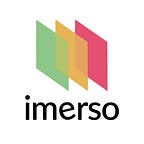Five Myths about 3D Laser Scanning in Construction
A list of the most common misconceptions we often deal with when working with technology in the Building industry
Fighting against myths is an inglorious battle.
Working with cutting-edge technology to digitise the Building industry — one of the least digitised industries in the world — our team keeps hearing “folk tales” about laser scanning on a daily basis.
Myths present a clever trap, since they are based on a reasonable half-truth. This makes it easy for anyone new to the topic to get a wrong impression. Even people that use scanning regularly fall for these myths simply by not being updated with new opportunities currently available.
Here a list of the five most common misconceptions we often deal with when using 3D scanning in a construction site.
Myth 1: 3D laser scanning equipment is expensive.
Myth 2: Using 3D scanning onsite is difficult.
Myth 3: Scanning a construction site is a slow process.
Myth 4: 3D laser scanning is not an efficient method to track work progress.
Myth 5: 3D laser scanning is unnecessary.
Every week we will explore each of these myths, explaining why they are misleading and bringing some clarification about the use of technology in the construction site.
Below you find the first on the list.
Myth 1: 3D laser scanning equipment is expensive.
Why it seems reasonable?
Like any new technology, the first laser scanning devices were expensive at the time and remained so for many years — exclusive to deep-pocket companies and specialists. The high production costs of the equipment and the few numbers of vendors prevented the prices of the scanners from becoming more affordable. And many people still sit with that impression.
Fact:
This is no longer the case. As the number of suppliers and the models available on the market increases, the prices have now reached mainstream levels, and it becomes easier to find the right scanner for your needs. Despite several top-of-the-line scanners still requiring significant investment, there are now several industry-grade scanners with top-notch performance available at entry-level pricing.
The range of prices is quite large these days, and the device you choose needs to fit your use-case.
If you value precision in the captured data (e.g. for applications like onsite quality control, where Imerso specialises), then tripod-mounted scanners are still unbeatable.
These take a spherical 3D scan of their position, one scan at a time, and are in the EUR 10.000–15.000 range, such as the BLK360 scanner from Leica Geosystems. The prices go up as the scanner gets more advanced (with higher data resolutions, longer ranges, and even higher accuracy).
If you value the speed of the capture process at the expense of data accuracy (e.g. for applications such as rapidly establishing an initial BIM model), then mobile solutions might be best for you. These take a scan continuously as the users walk through the area and are higher in the price range due to their increased speed and agility, but still, at a much lower price point than the traditional high-end devices — you can look into new solutions such as the new Leica BLK2GO and the new VLX solution from NavVis.
If you fit both use-cases and need a solution that provides a fast and easy scanning workflow without compromising on the data accuracy, this is where Imerso software comes in. Our platform is compatible with data from any scanner, but when coupled with high-accuracy scanners such as tripod-based solutions, Imerso enables one-button use that bypasses the need for any complex procedures (involving coordinates and geo-referencing). This makes the onsite workflow 90% faster and easy to learn by staff who never did a scan before. In addition, the scan data submitted to the platform is automatically inspected against BIM or the building plans and checked for any problematic deviations — reducing the time of traditional workflows from days to minutes.
With such new software solutions arriving on the market, it is important to realise that the functionalities of the scanner equipment model can be massively leveraged to establish new applications and workflows.
In summary, the good news is that in recent years, the price of high-quality scanners has been decreasing and will continue to do so.
It is no coincidence that the last five years have brought an explosion in the market growth of 25 –30% for laser scanner technology. Today, it is possible to capture scan data coupled with realistic imagery in high dynamic range (HDR) at reasonable price levels.
For those on the fence on whether to make a purchase, an alternative is to rent the equipment and test it out in practice. In general, the schedule is quite flexible, you can rent it per hour, per day or, even a monthly basis, according to the needs of the project.
A third option is to hire surveying services. The hired company is responsible for going to your project site and capturing the As-built status. All the data, in that case, is yours. The price charged will take into account not only the location but also the size of the project. As long as access to the property is readily available, the whole process from booking the inspection appointment through to receiving the finished report will take a few days.
